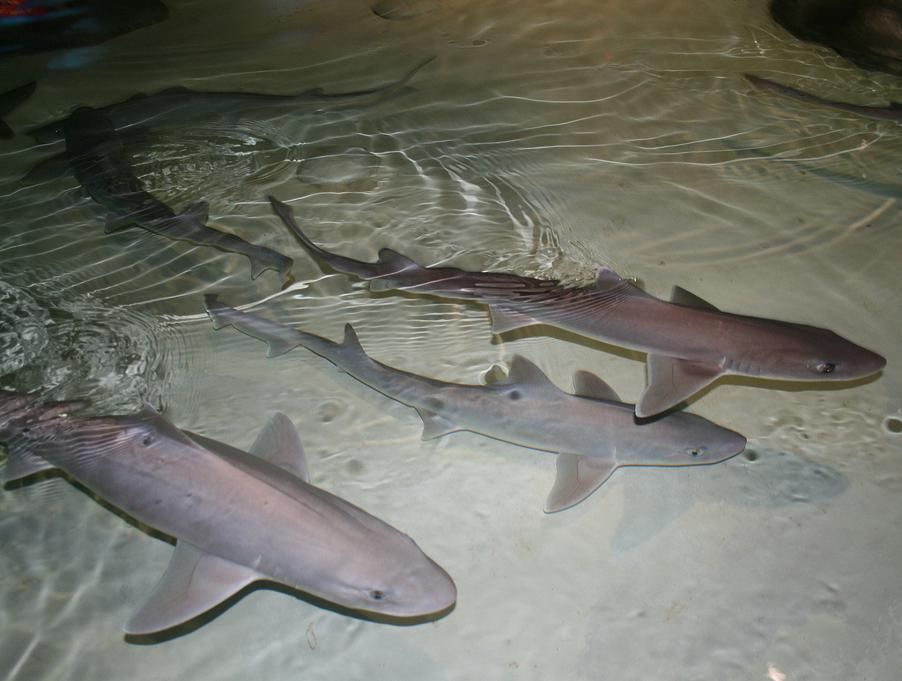Shark Molecule Kills Human Viruses, Too

A molecule found in sharks appears to be able to wipe out human liver viruses, such as hepatitis, new research has found.
"Sharks are remarkably resistant to viruses," study researcher Michael Zasloff, of the Georgetown University Medical Center, told LiveScience. Zasloff discovered the molecule, squalamine, in 1993 in the dogfish shark, a small- to medium-size shark found in the Atlantic, Pacific, and Indian Oceans. [See a Gallery of Wild Sharks]
"It looked like no other compound that had been described in any animal or plant before. It was something completely unique," Zasloff said. The compound is a potent antibacterial and has shown efficacy in treating human cancers and an eye condition known as macular degeneration, which causes blindness.
Zasloff's new research shows it can also kill many human liver viruses, though a few researchers who weren't involved in the study do have concerns that in order to see an effect, you'd need toxic levels of the molecule.
Viral activity
By studying the compound's structure and how it works in the human body, Zasloff thought it might have some antiviral properties. He saw that the molecule works by sticking to the cell membranes of the liver and blood vessels. While there, it kicks off other proteins, some of which are essential for viruses to enter and survive in the cell.
The researchers decided to test the compound on several different live viruses that infect liver cells, including hepatitis B, dengue virus and yellow fever. They saw high efficacy across the board.
Sign up for the Live Science daily newsletter now
Get the world’s most fascinating discoveries delivered straight to your inbox.
The researchers were unable to test the compound against hepatitis C, a virus that infects the livers of about 1.5 percent of the U.S. population and can cause liver cancer, because hepatitis C doesn't grow well in lab models like rats. Yellow fever virus is often used as a surrogate lab test to show possible efficacy against hepatitis C, and the researchers were able to cure yellow fever in hamsters with squalamine. [7 Devastating Infectious Diseases]
Zasloff hopes to start human trials in the next few years.
Future treatments
The sharks also contain a number of other squalamine-like molecules, which target other tissues and organs. Some interact with the respiratory system and others with the kidneys.
"I believe that each of those compounds renders those tissues resistant and the day will come when we will be in a position to administer a compound to a human being and render certain organs selectively resistant against particular viruses," Zasloff explained. Zasloff holds several patents for the use of squalamine and related compounds for the treatment of viral diseases.
Jean Michel Brunel, a researcher from the University of the Mediterranean in Marseille, France, is excited about the data, though he said the concentrations used to kill the viruses are high, and, as such, could be toxic to humans.
Marc Maresca, a researcher at Paul Cézanne University in Aix-en-Provence, France, who wasn't involved in the study, agreed that the concentrations used were quite high, possibly in toxic ranges for some cells, but in an email to LiveScience Meresca also called the study "very exciting."
"Overall, the paper is very convincing," Meresca said. "It could open a new way to fight against major viruses such as HBV, HCV or HIV."
The study was published today (Sept. 19) in the journal Proceedings of the National Academies of Sciences.
You can follow LiveScience staff writer Jennifer Welsh on Twitter @microbelover. Follow LiveScience for the latest in science news and discoveries on Twitter @livescience and on Facebook.
Jennifer Welsh is a Connecticut-based science writer and editor and a regular contributor to Live Science. She also has several years of bench work in cancer research and anti-viral drug discovery under her belt. She has previously written for Science News, VerywellHealth, The Scientist, Discover Magazine, WIRED Science, and Business Insider.

What is double pneumonia? Pope Francis's diagnosis explained.

2 'exclusively indoor' cats in Michigan caught bird flu, potentially from their owners
Most Popular



